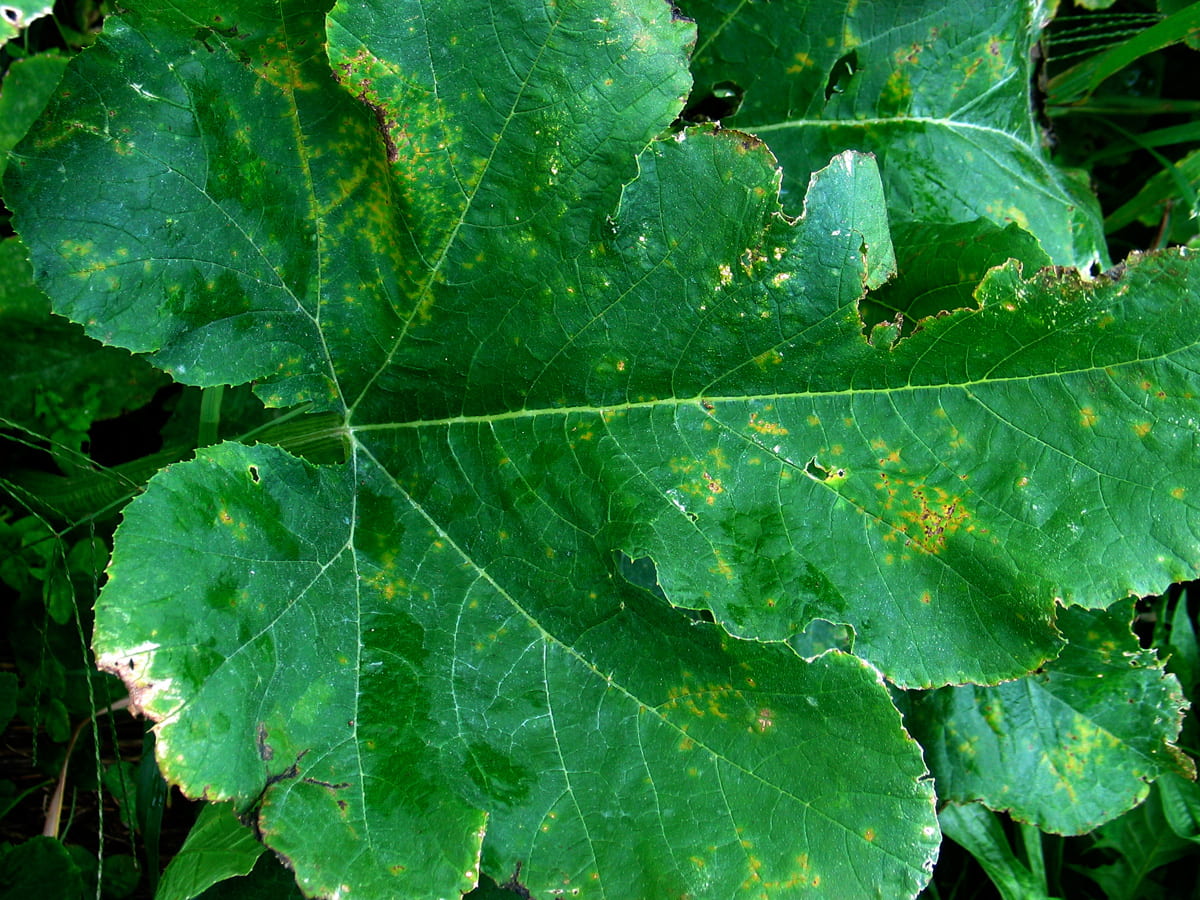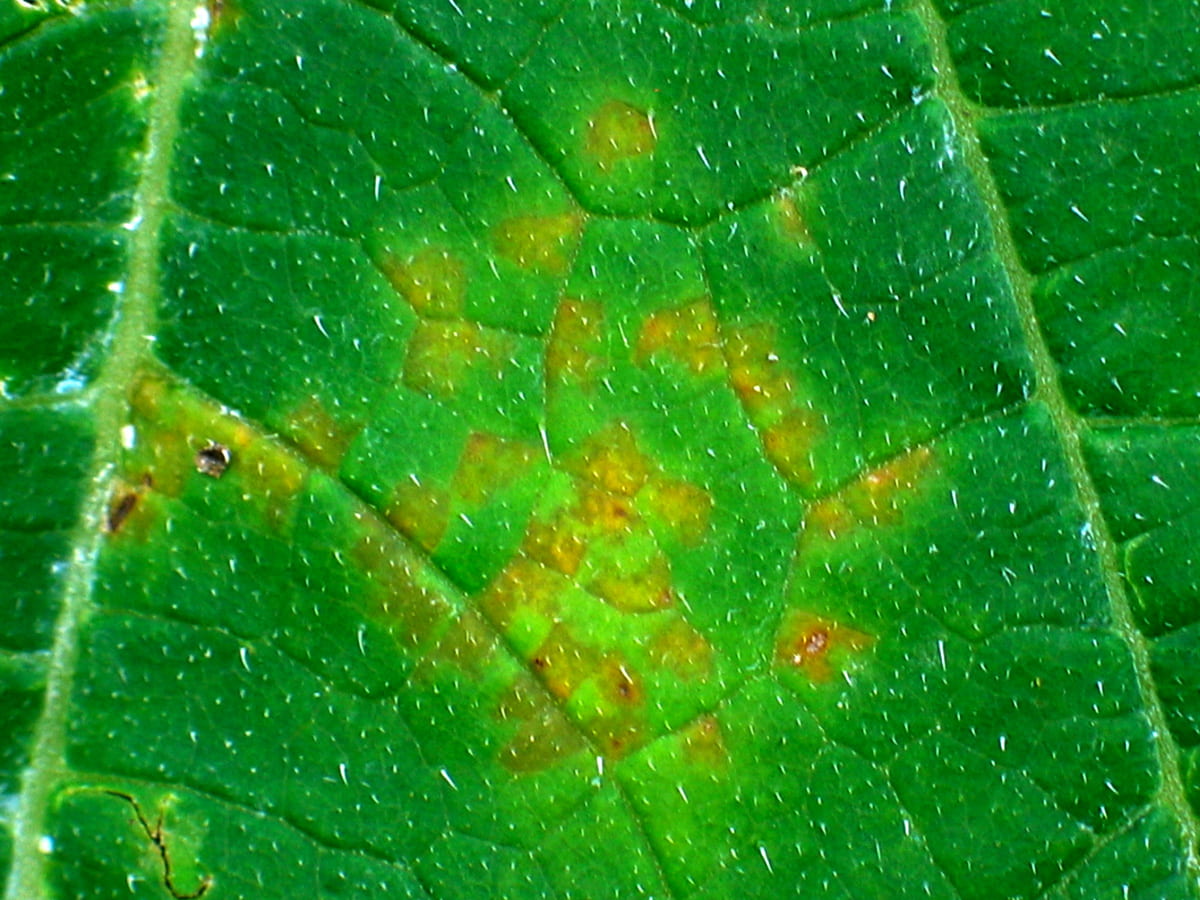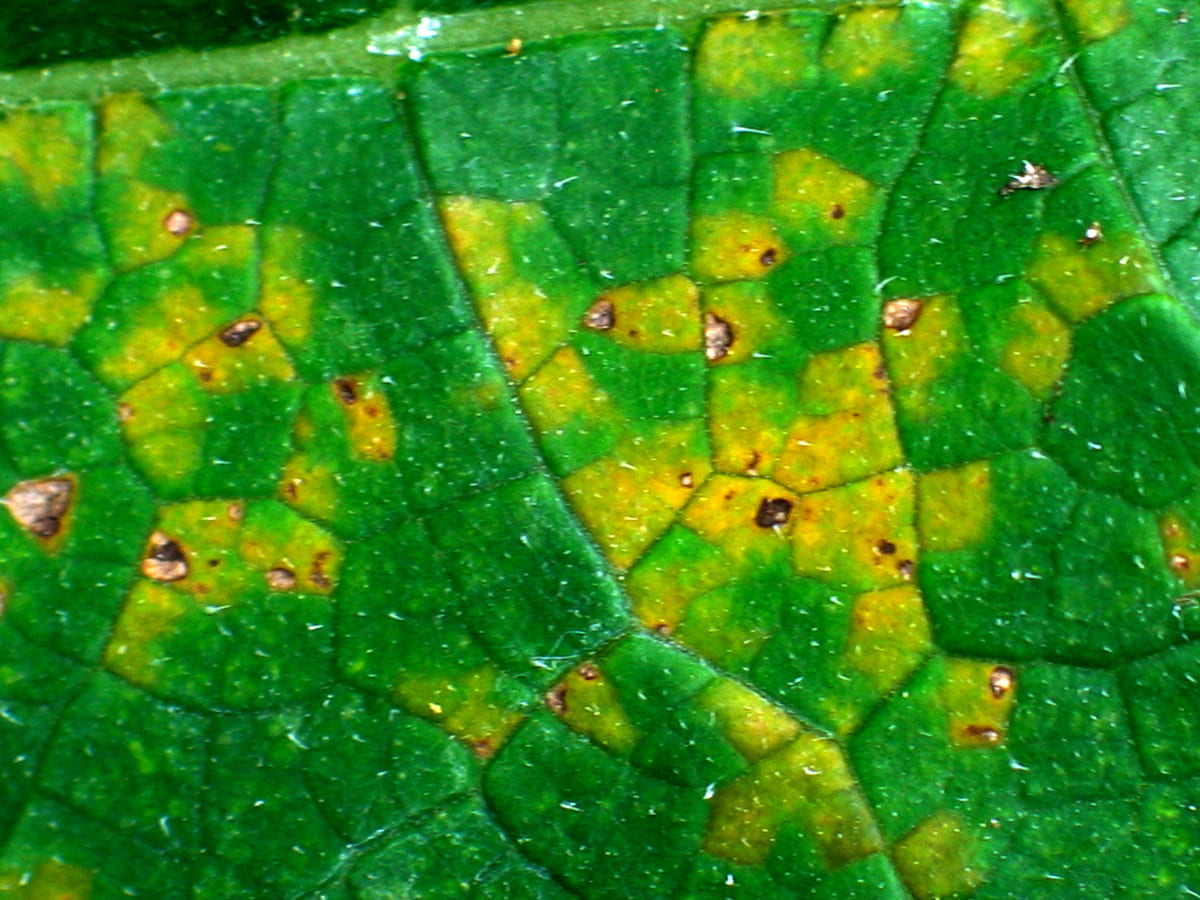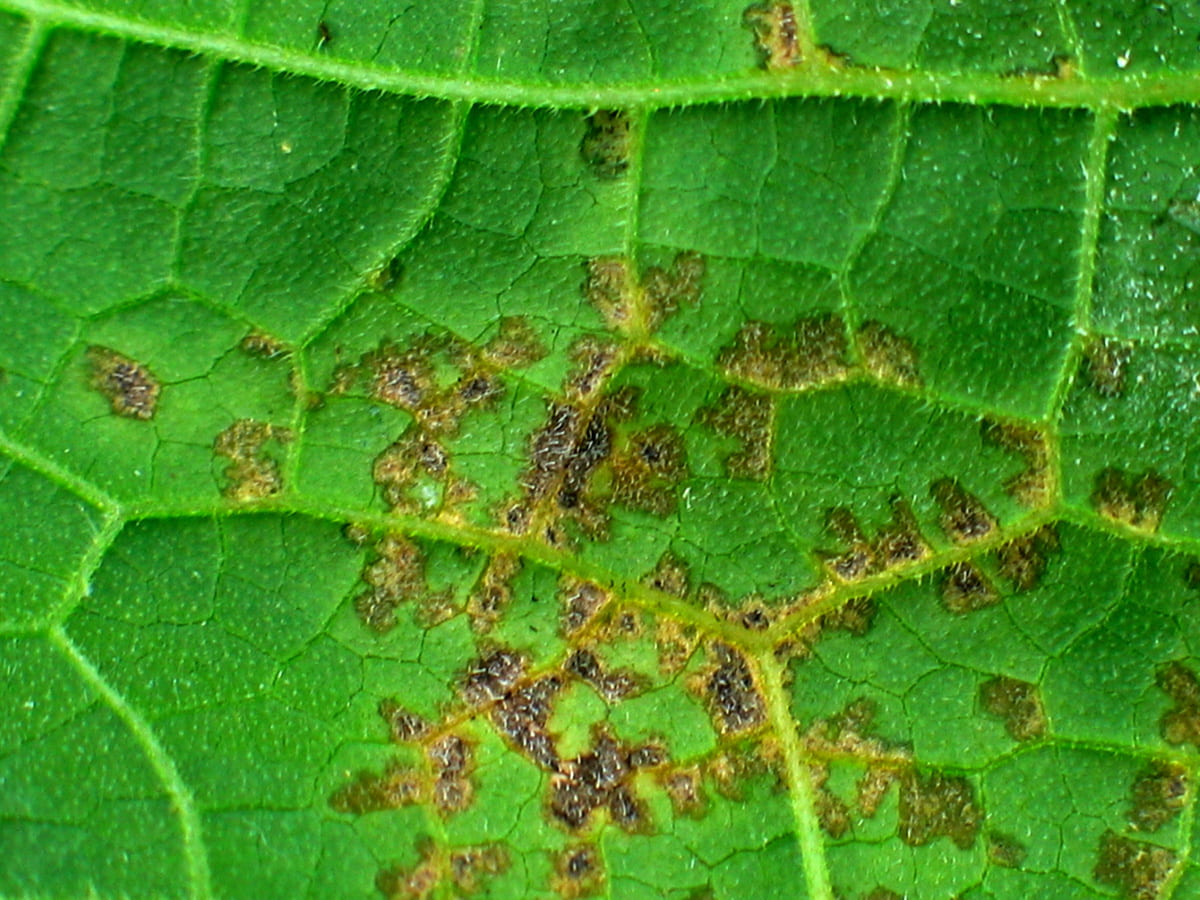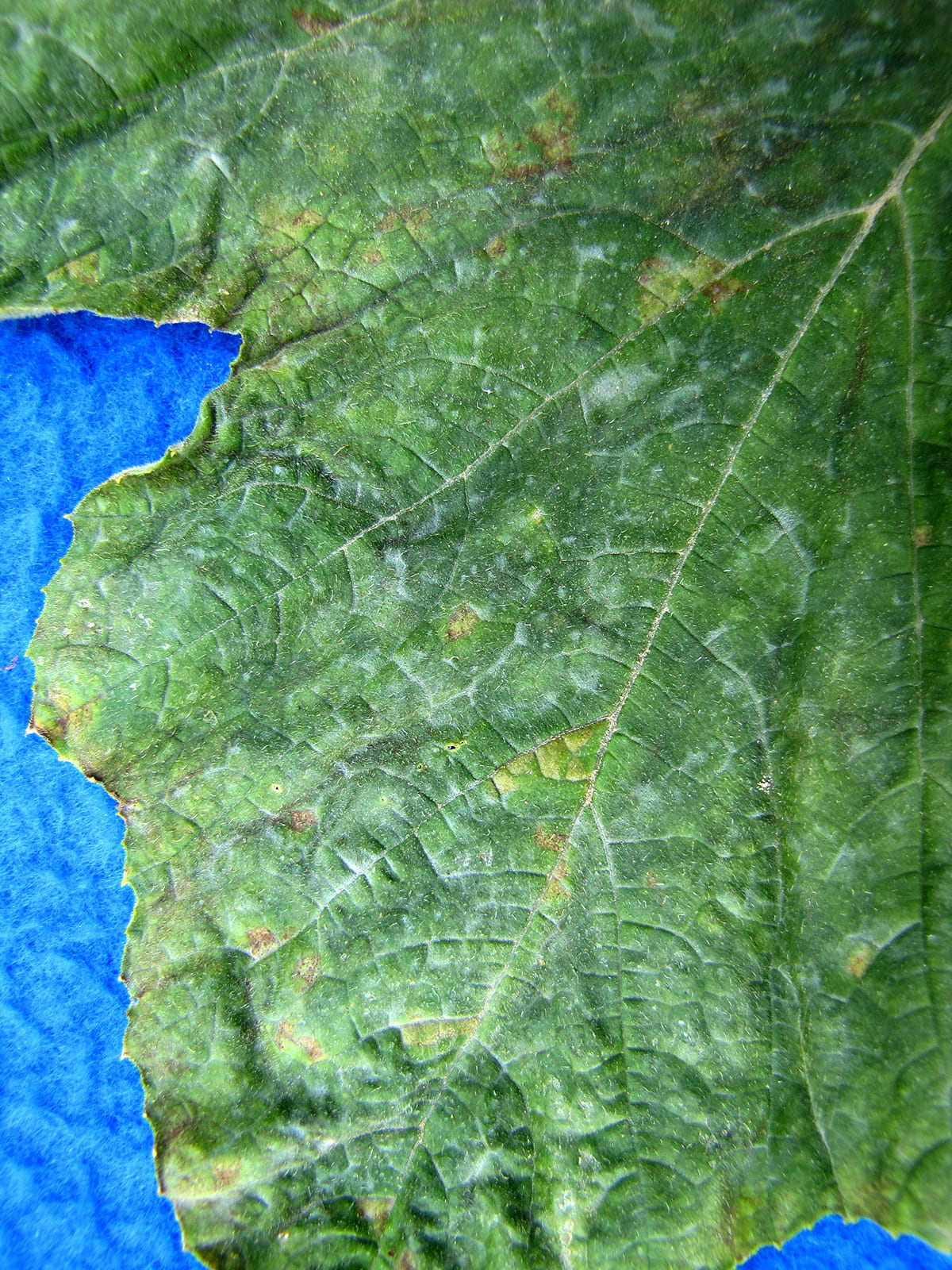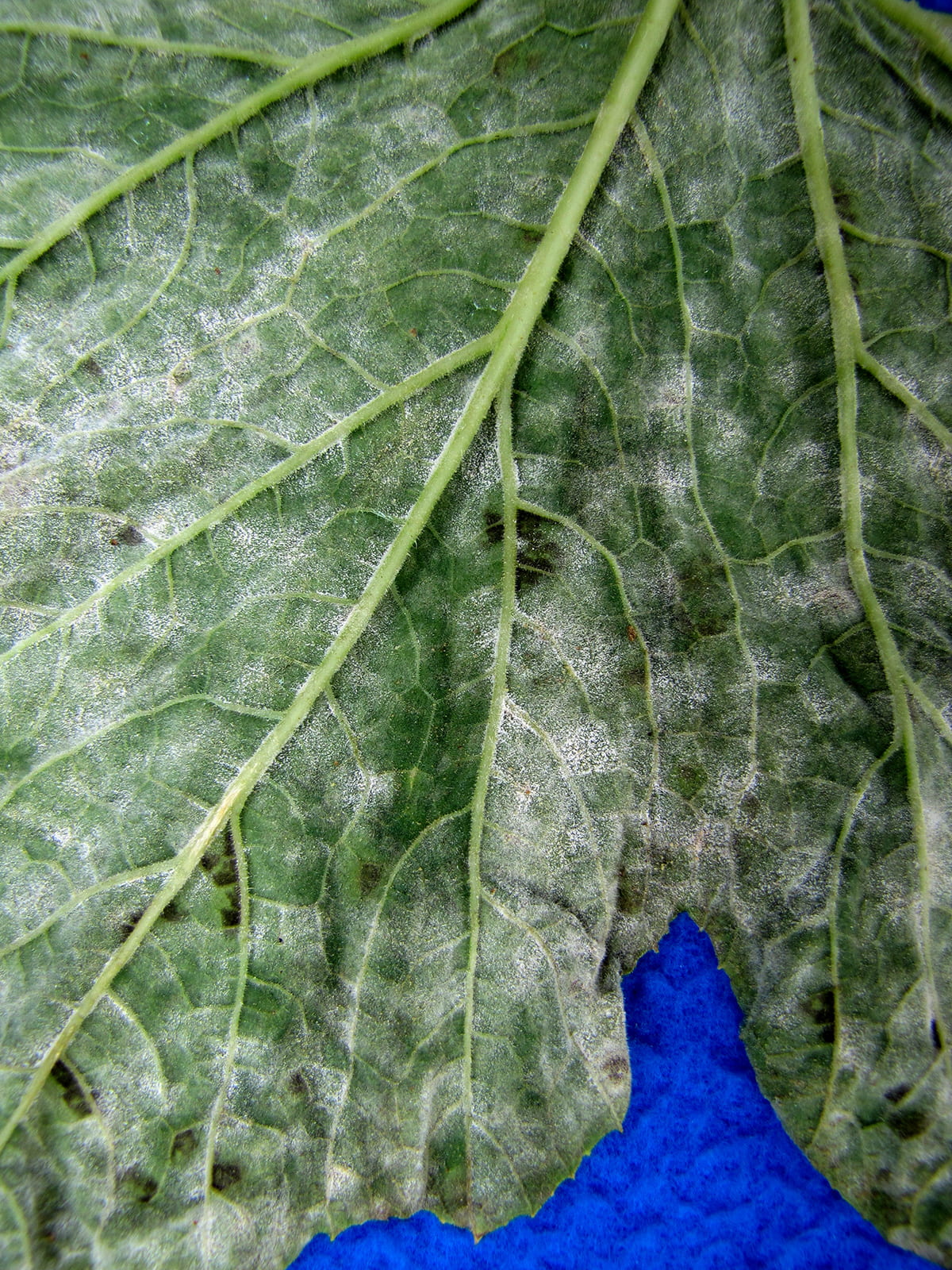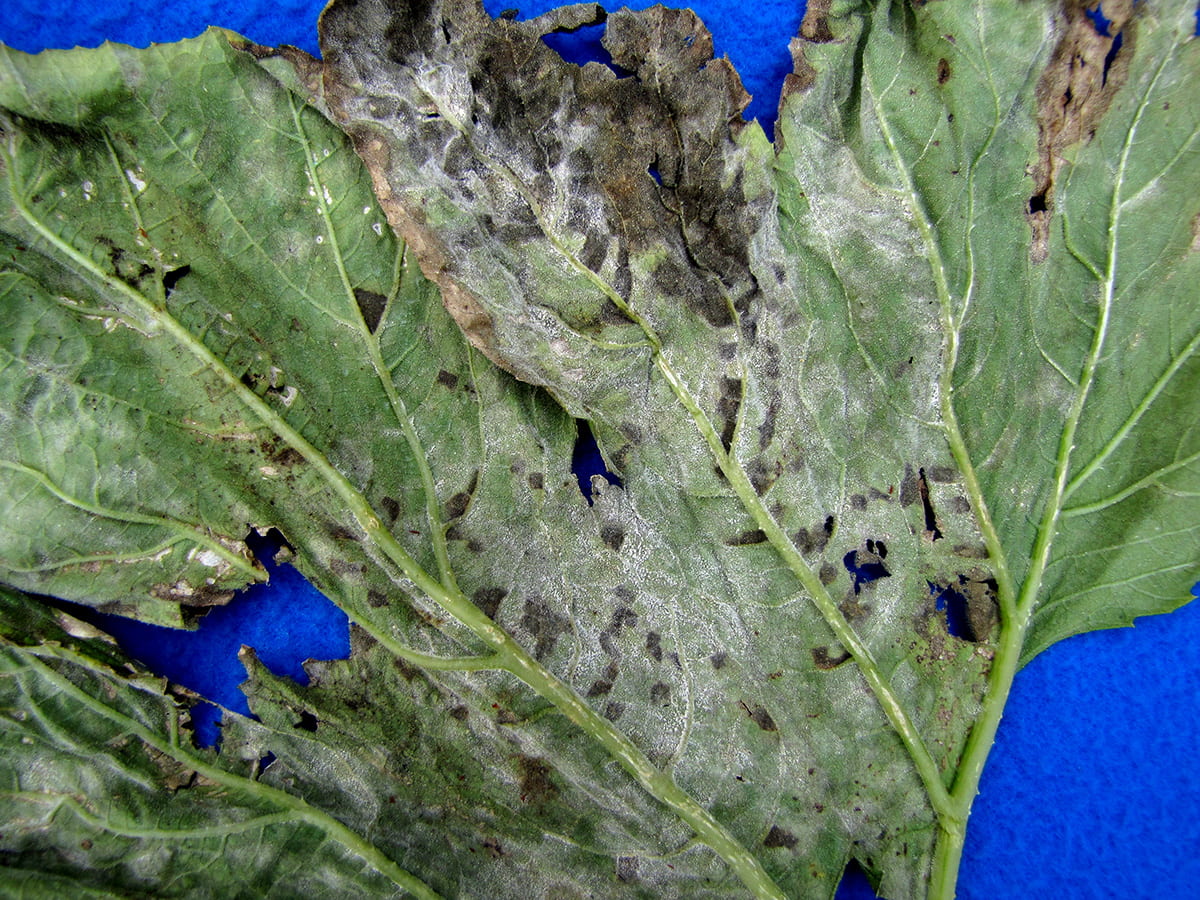- Downy mildew on cucurbits: Other symptoms and imitators
- Downy mildew of cucumber and other cucurbit plants
- More information
Being able to recognize initial symptoms of a disease is important for ensuring application of fungicides is started before the disease becomes too well established to be managed effectively. Fungicides have limited to no activity following infection. Infection begins about one week before symptoms appear. Additionally, when using targeted fungicides with single-site mode of action, potential to select pathogen strains with resistance increases with the size of the pathogen population (amount of diseased tissue) being treated.
Below: The following three images show symptoms of downy mildew on cucumber begin as light yellow spots with a water-soaked appearance on the leaf underside. At this early stage some spots already have the characteristic angular shape for this disease as symptoms do not expand past major veins. The white spot is physical injury.
Below: The following six photographs are of symptoms of downy mildew on cantaloupe. Initially spots are light yellow with a dark green border that appears water-soaked. The spots enlarge and become brown (necrotic). They are not angular like symptoms on cucumber and butternut squash. However, upon close examination of some spots on the underside of leaves, it can be seen that major veins in the leaf form a barrier to expansion of downy mildew in this type of cucurbit as in others (see arrows). The downy mildew pathogen does not produce many spores on cantaloupe leaves, thus the dark fuzzy (downy) fungal growth that commonly occurs on the underside of spots on cucumber and butternut squash leaves will not develop on these spots.
Below: Downy mildew causes tiny orange-yellow spots on giant pumpkin (following two images). This cucurbit crop type is a different species than Halloween-type pumpkin (Cucurbita maxima and Cucurbita pepo, respectively). Symptoms occur less commonly on giant pumpkin. Leaves often need to be examined closely to see these symptoms. Symptoms are present on some leaves in the field shot below; the image needs to be enlarged greatly to see them. The downy mildew pathogen produces few spores on giant pumpkin leaves, thus the dark fuzzy (downy) fungal growth that commonly occurs on the underside of spots on cucumber and butternut squash leaves will not develop on these spots. Many spots may need to be examined with a microscope to find spores. Downy mildew is not as destructive on giant pumpkin as on other cucurbit crop types; affected leaves are not killed as rapidly.
Below: The following six photographs are of symptoms of downy mildew on butternut squash. Symptoms begin as tiny spots with a yellow border. Spots can occur in clusters. Very early symptoms tend to lack the angular appearance common for older symptoms: look at the individual yellow spots on the left side of the second image. The spots in the cluster on the right side of this image are exhibiting some angular edges where their expansion was stopped by major veins in the leaf. The last two images are close ups of the leaf in the previous image; they show the upper and lower surfaces of the part of the leaf with the same symptoms.
Below: Initial symptoms of downy mildew on Halloween pumpkin (Cucurbita pepo) include:
- Small,faint, light yellow, angular spots (first image below). Sometimes dark sporulation is visible on the underside (second image). Leaf veins form the edges of many spots because they create a physical barrier for the pathogen growing in the leaf.
- Tiny brown spots of necrotic (dead) tissue often with a yellow border and characteristic dark brown sporulation on the underside of the spots (images 3 to 8 below).
- Small, orange-yellow, angular spots (last 5 images of upper and lower leaf surfaces).
Ornamental Gourd (below): Symptoms of downy mildew are the angular-shaped spots on the top side of these leaves with dark, fuzzy growth of the pathogen on the opposite side of the leaf. Initially the spots are yellow, then they turn dark brown. Spores of the pathogen were observed with all of the angular spots. The white powdery growth is powdery mildew.





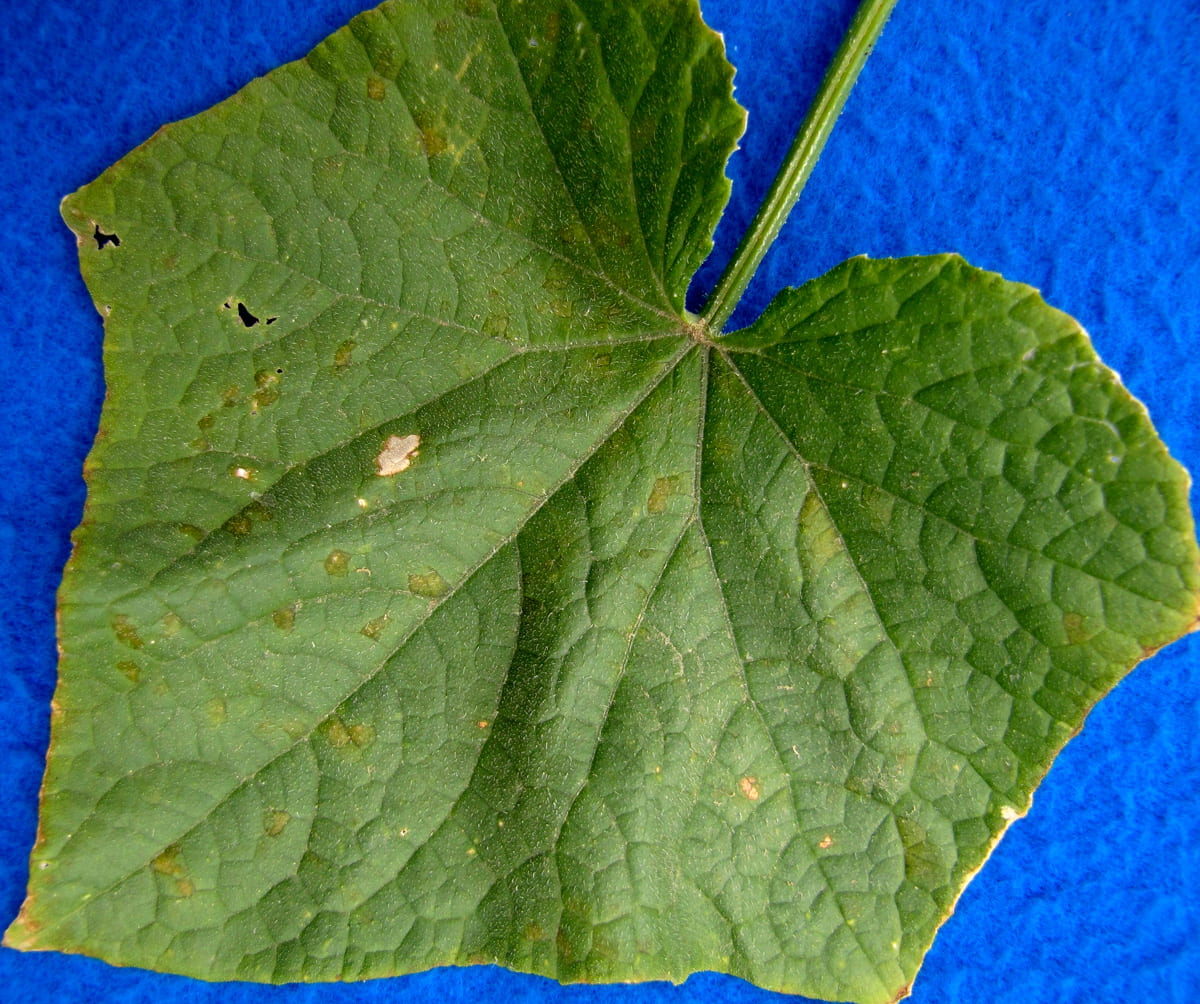
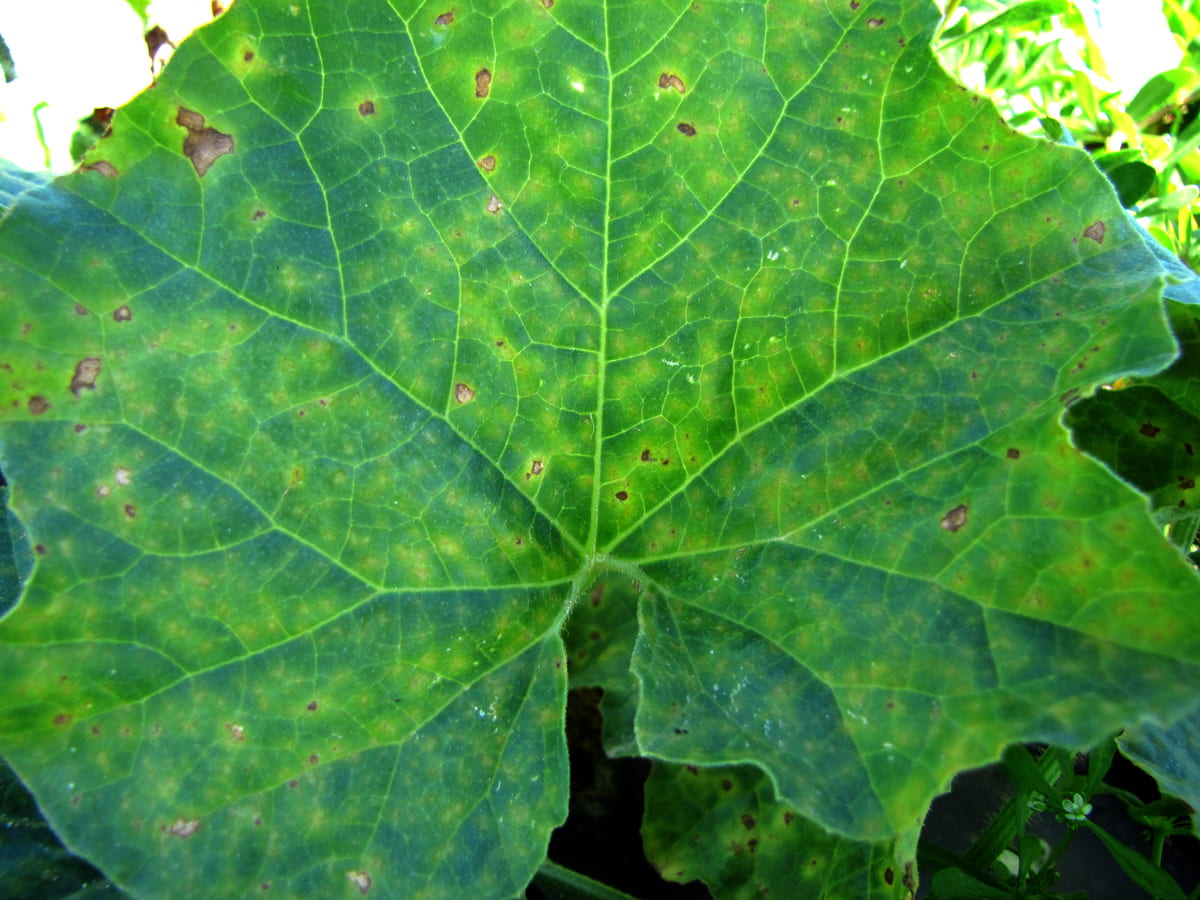
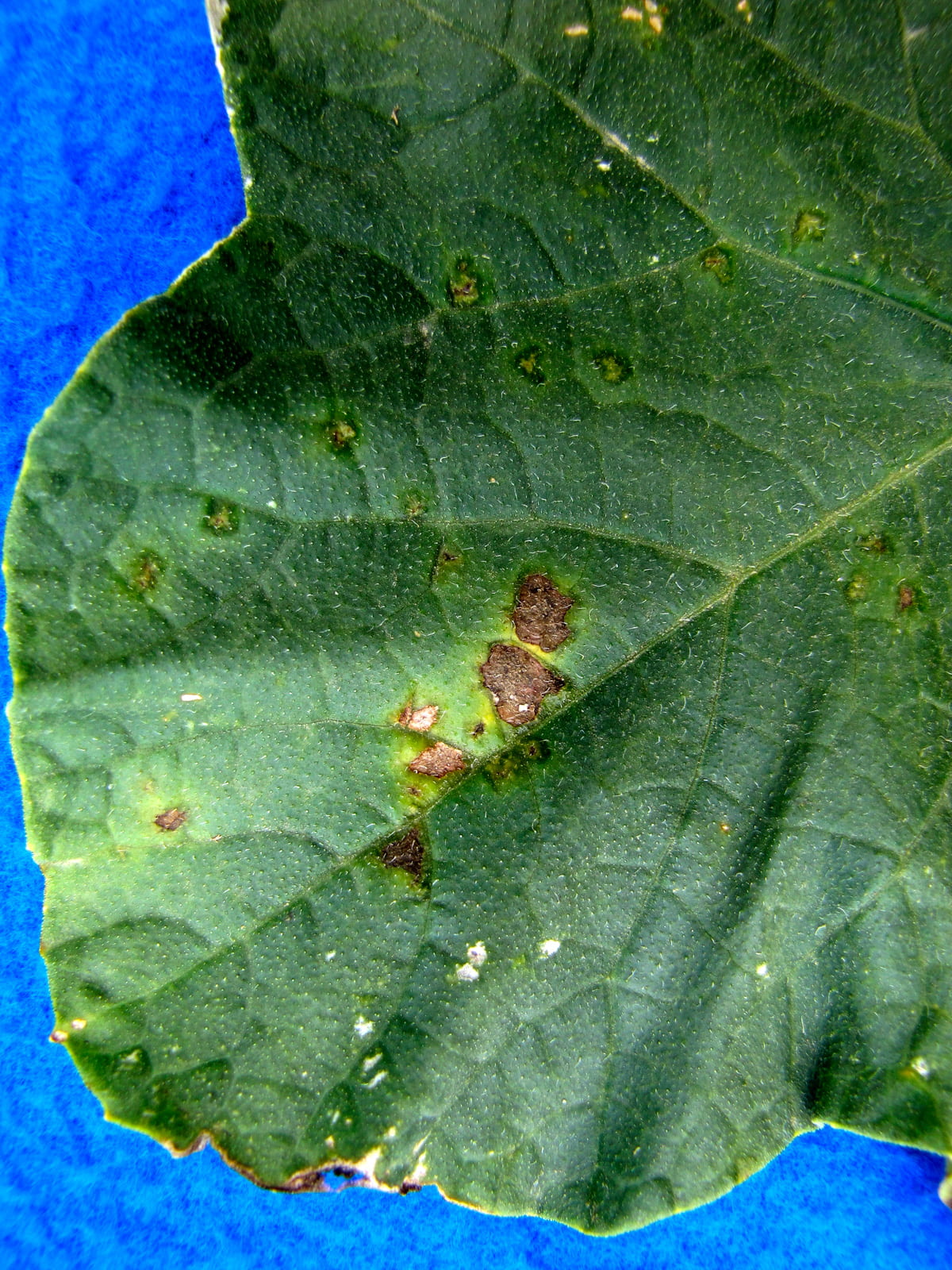

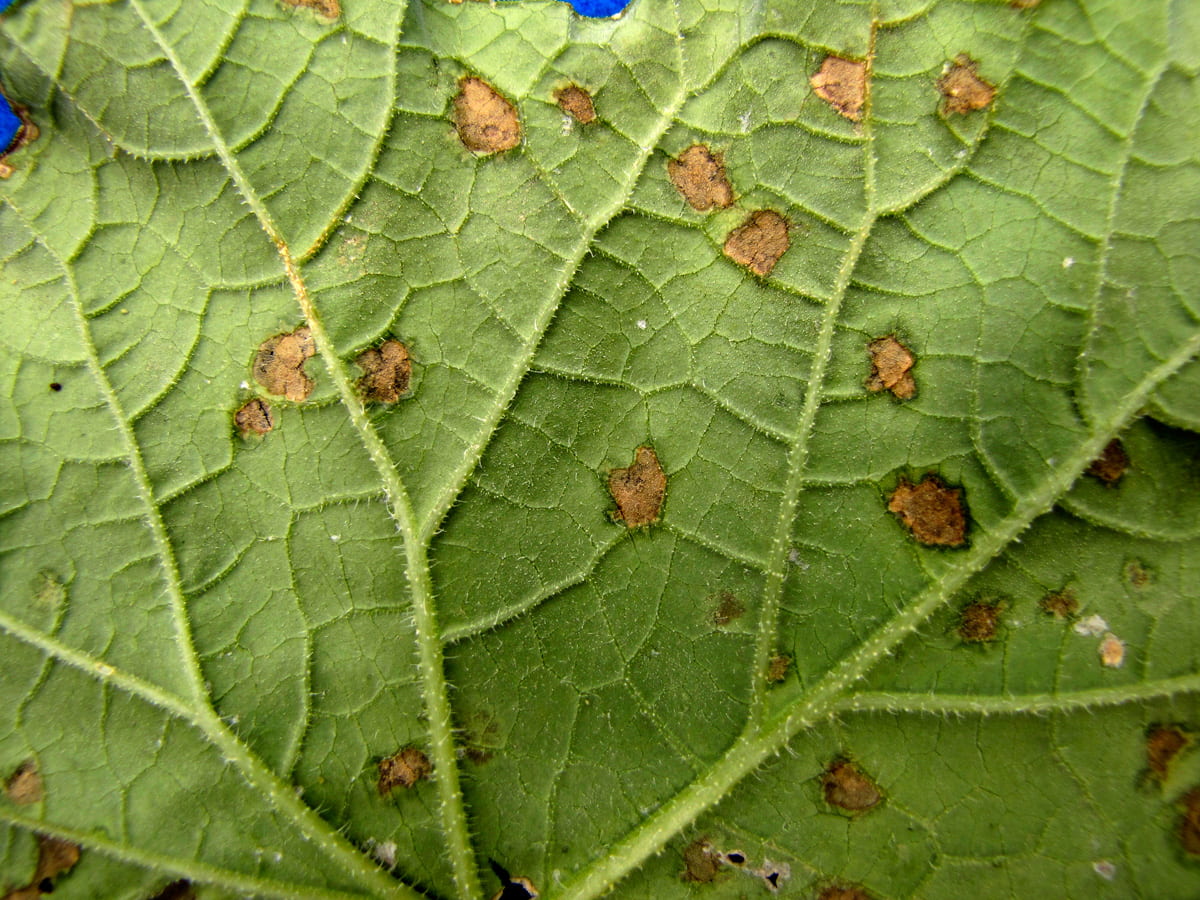
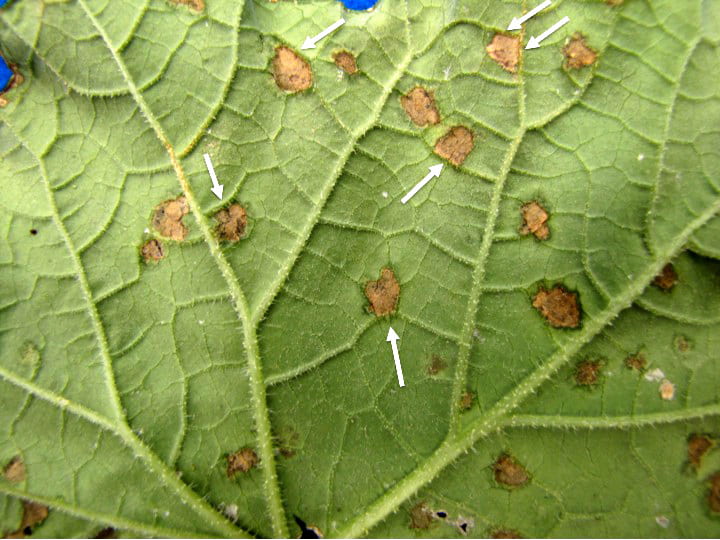
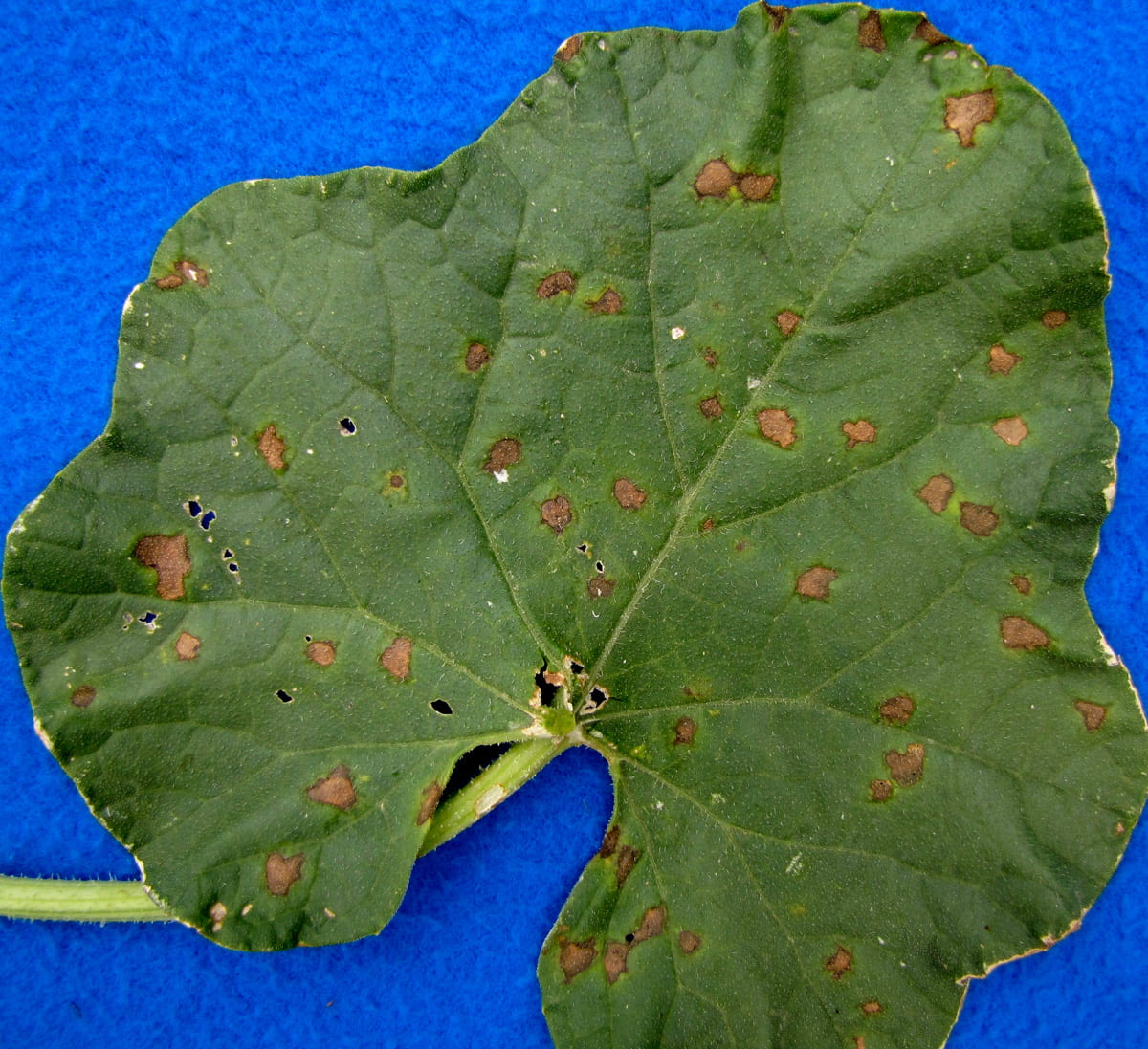

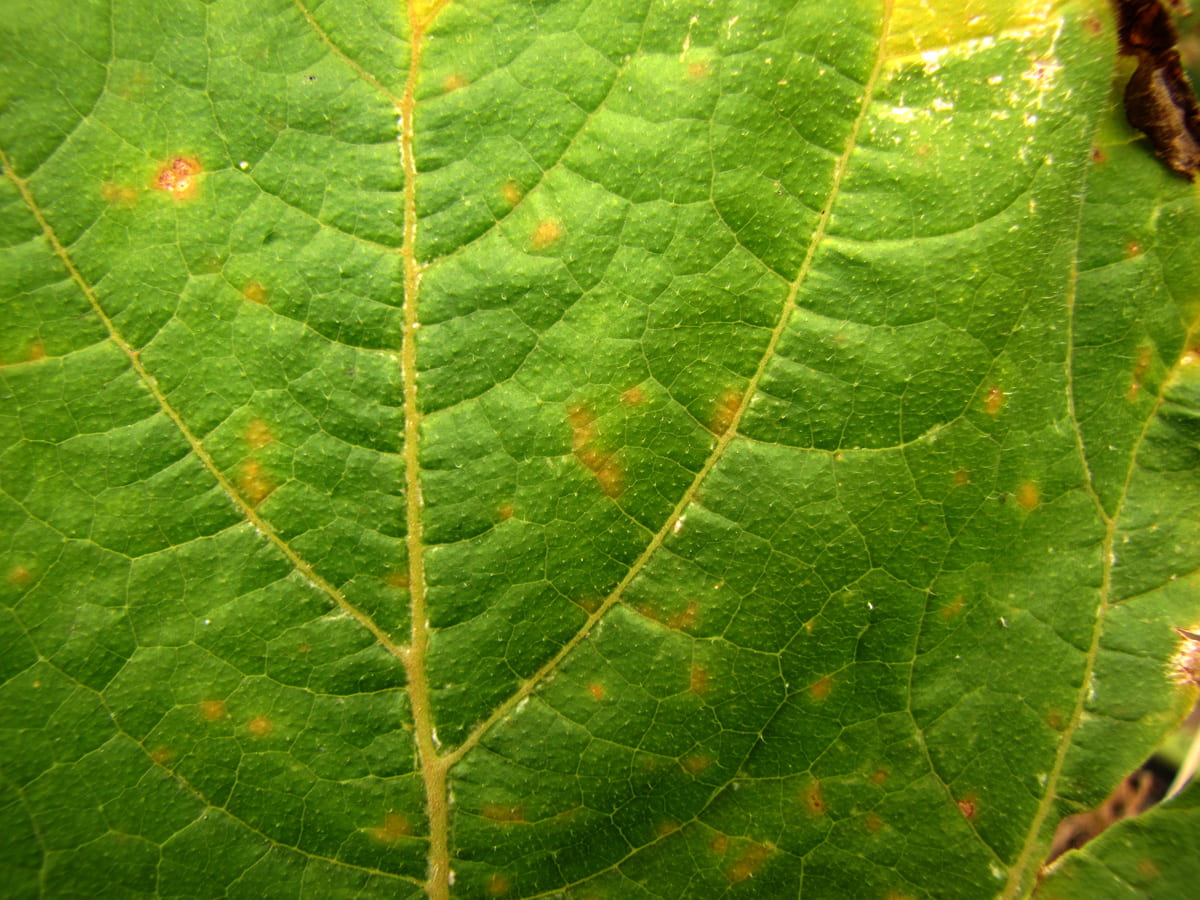
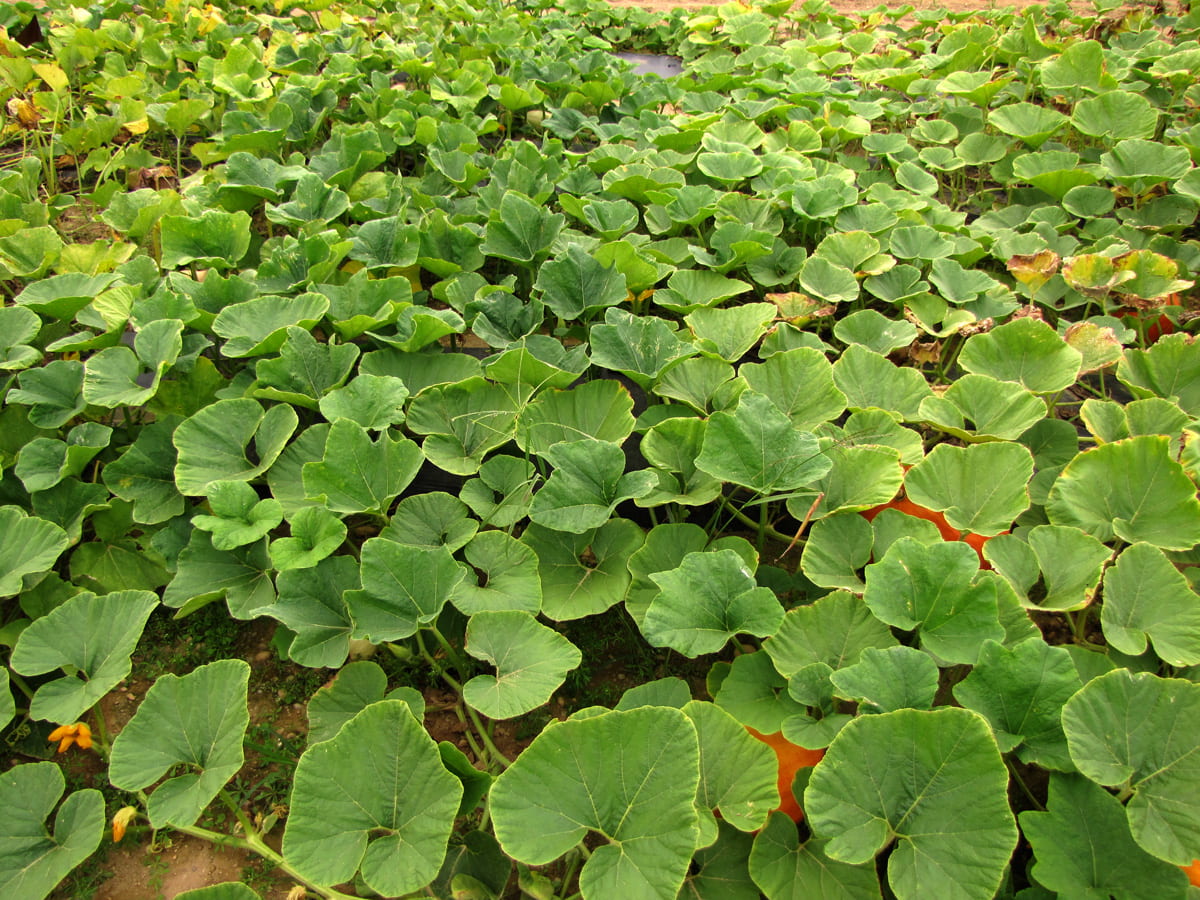
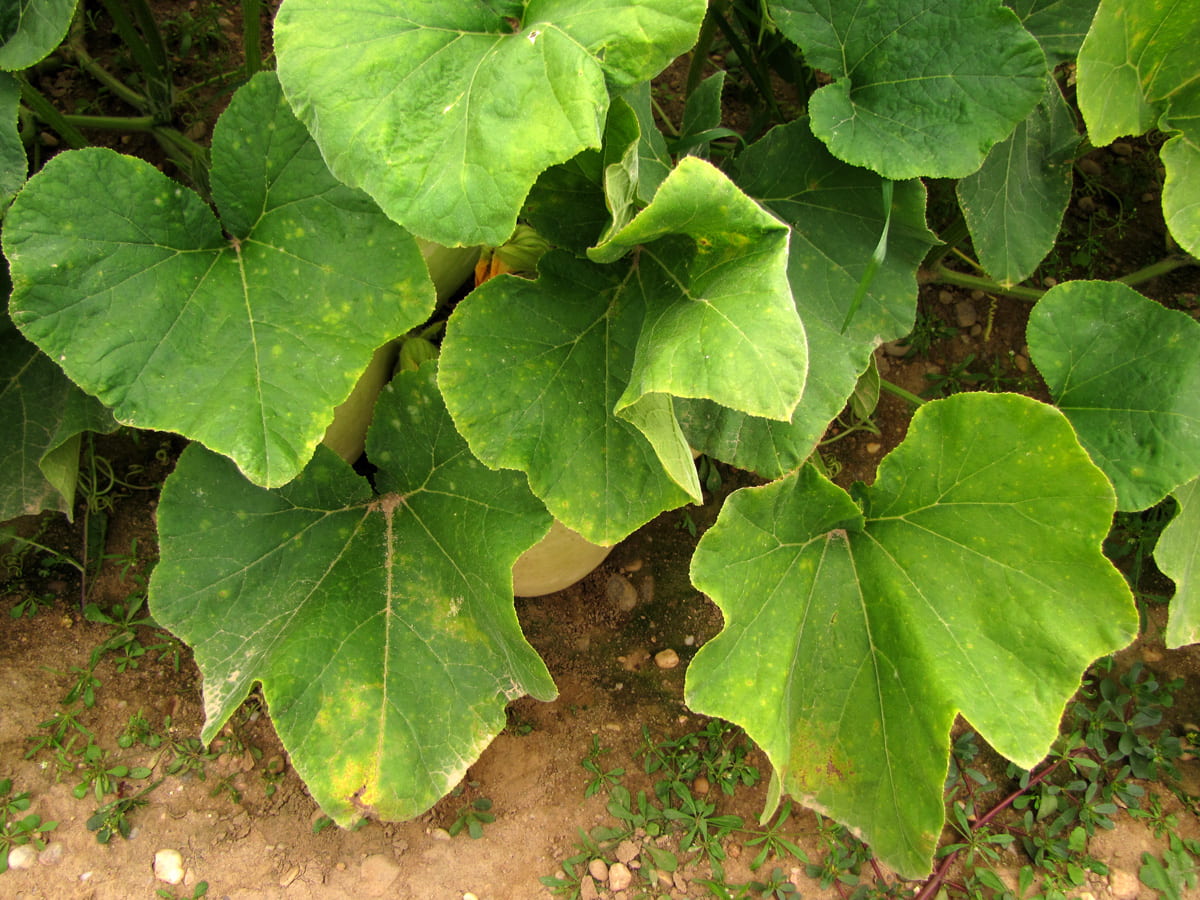
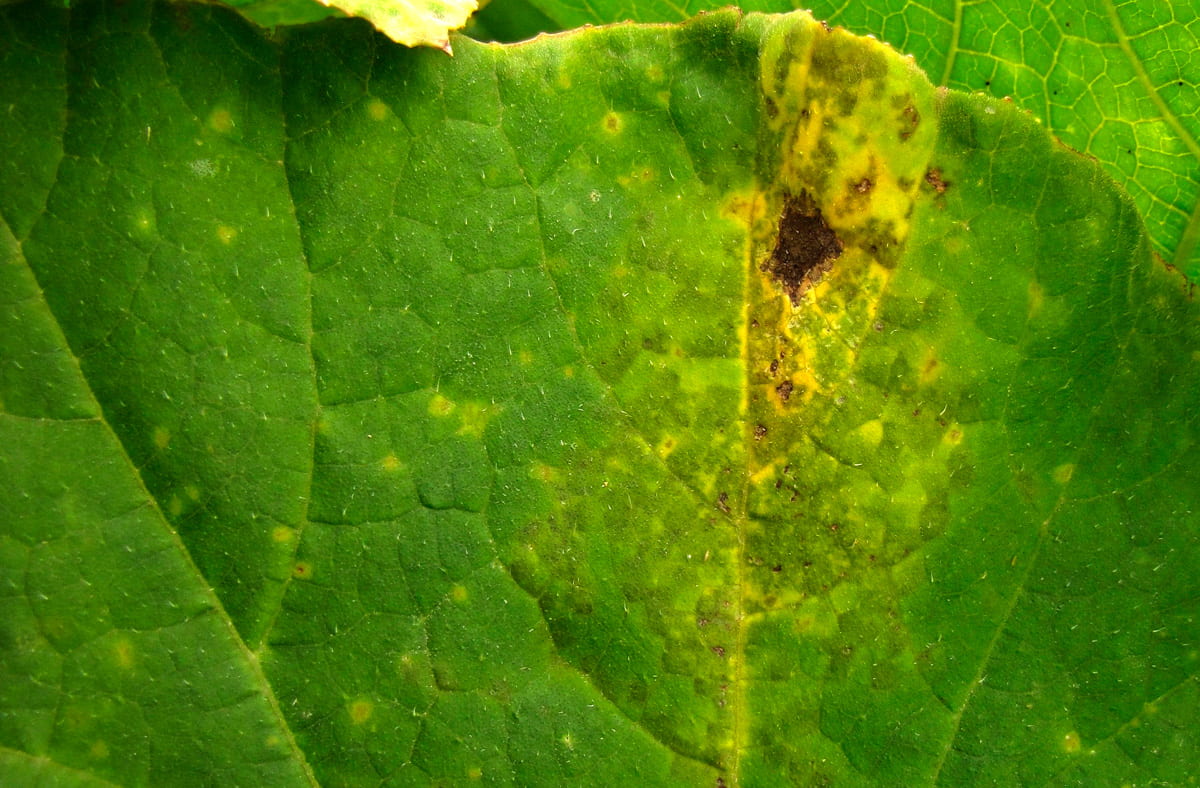


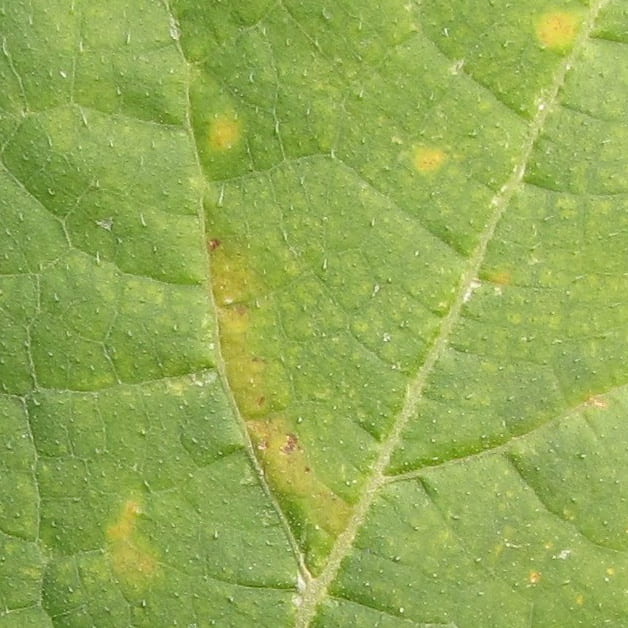
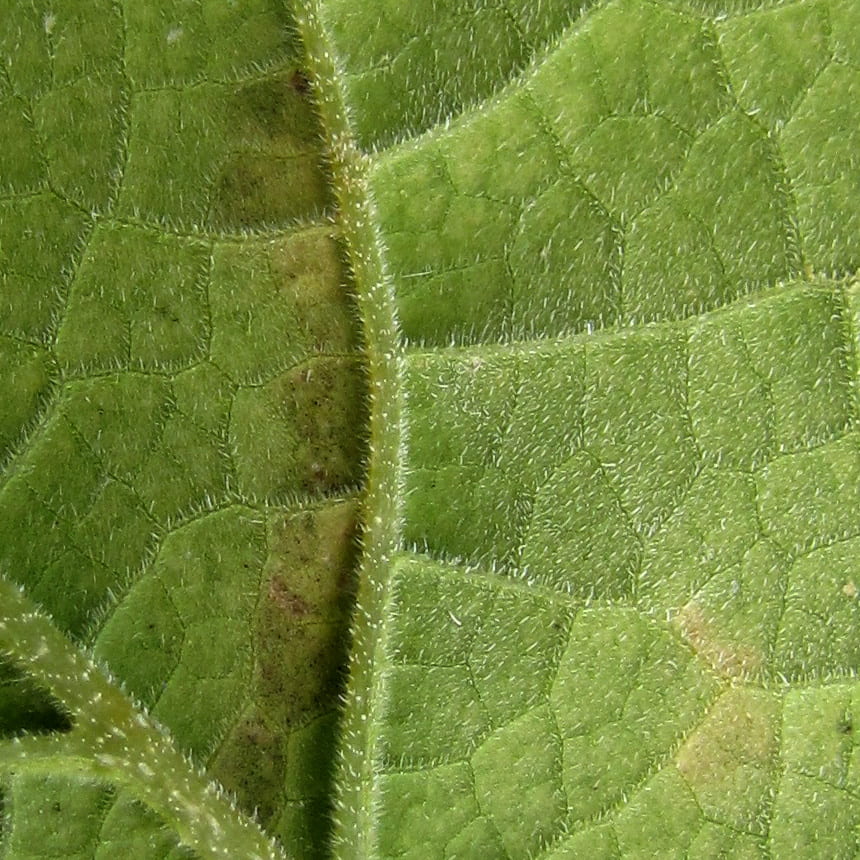


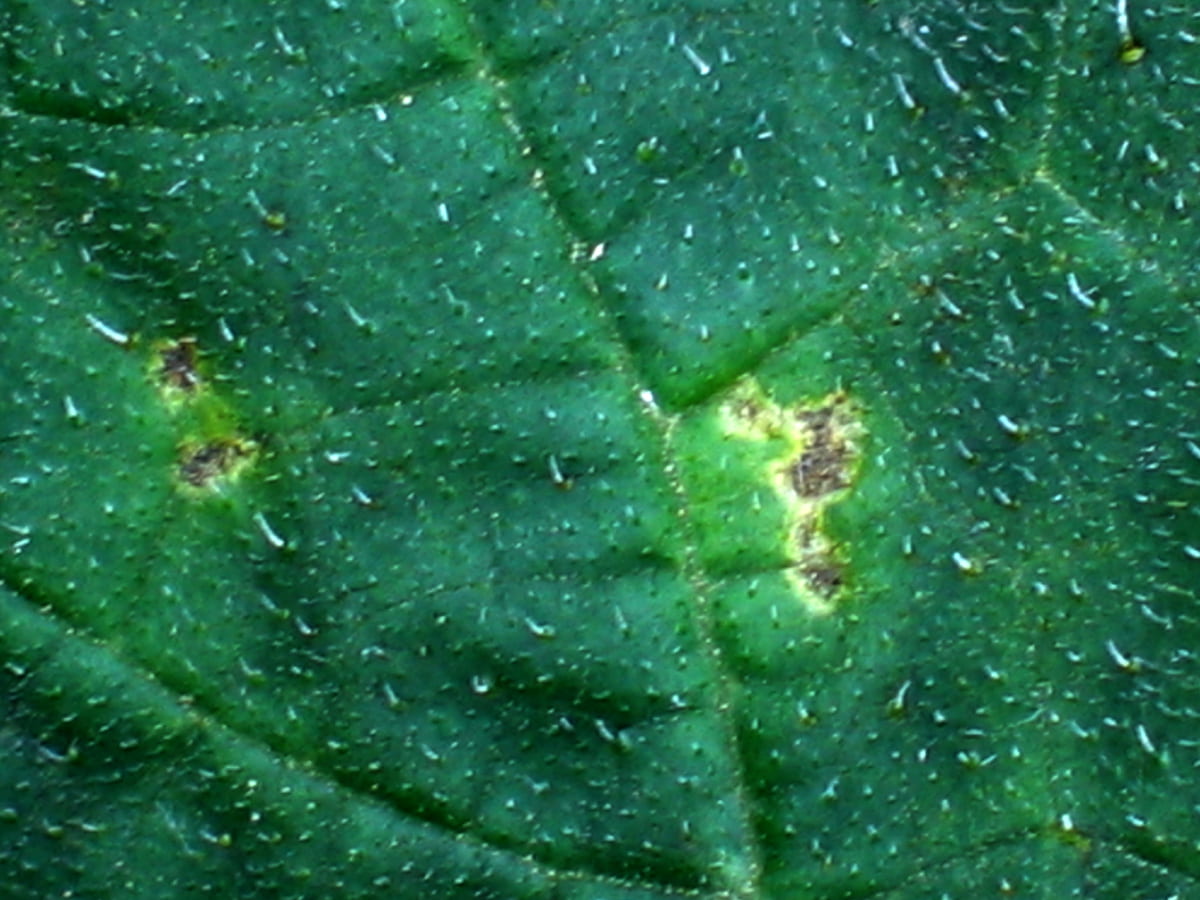

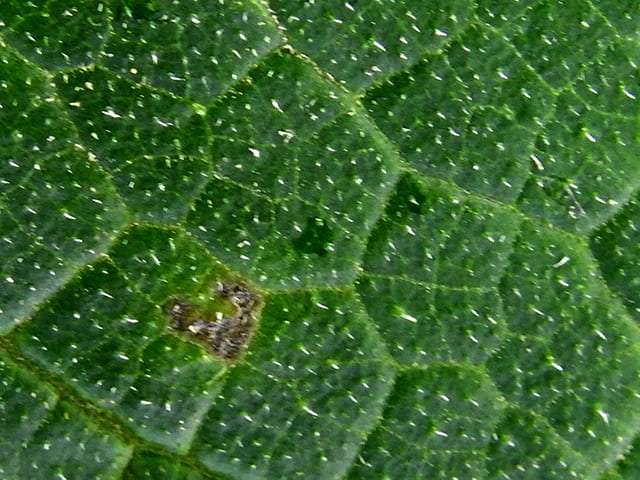
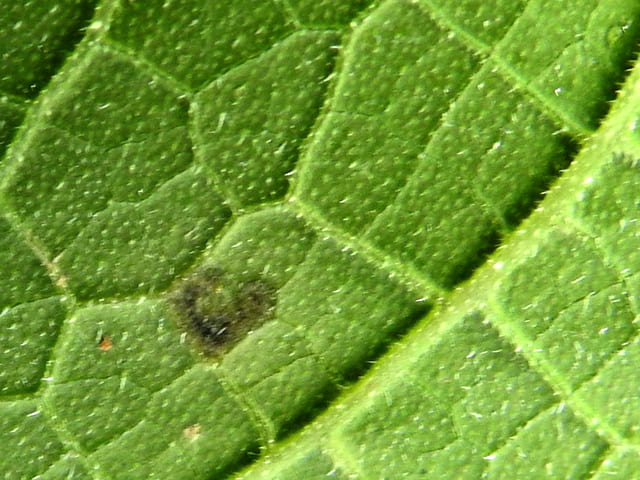
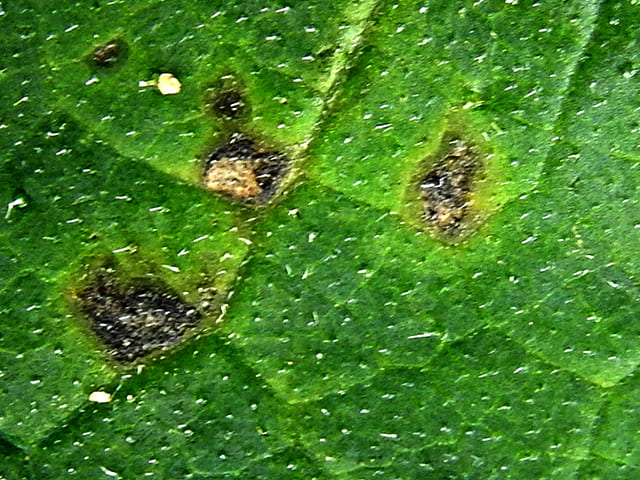
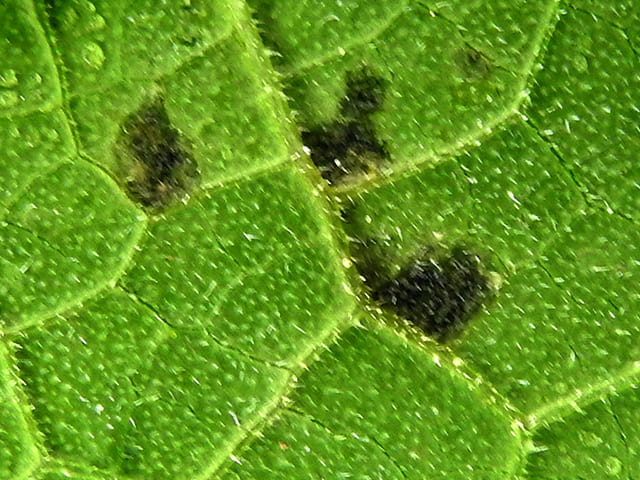 \
\